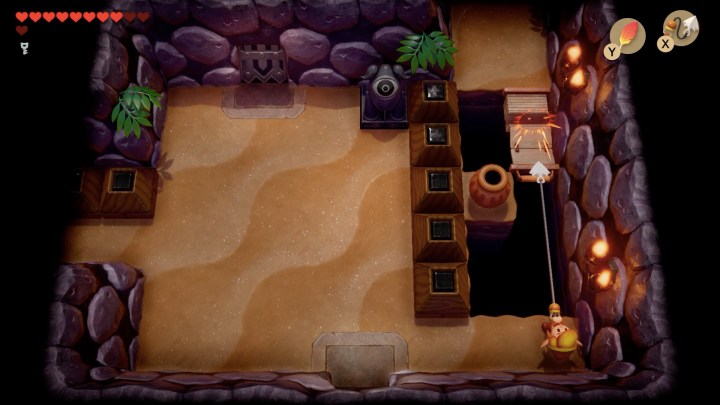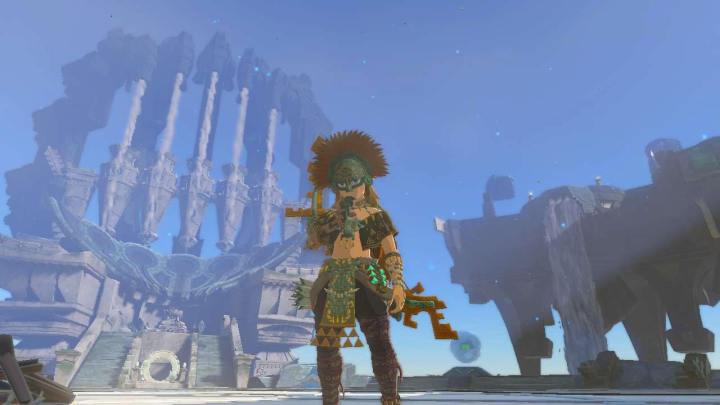
Before The Legend of Zelda: Tears of the Kingdom‘s launch, there was one question that fans kept asking: Would the sequel bring back traditional Zelda dungeons? That was something that was sorely lacking from Breath of the Wild, which replaced them with Divine Beasts. These were technically dungeons, but ones that were much smaller in scope and revolved around specific puzzling.
Nintendo would alleviate some fears days ahead of its launch by confirming that more familiar dungeons return for the sequel, but we weren’t given a full idea of what that would entail. All we knew is that they’d be bigger and be themed. So, does Tears of the Kingdom actually usher in the return of classic Zelda dungeons? It’s complicated. The answer is firmly between yes and no, depending on your definition of “traditional.”
What are traditional Zelda dungeons?
Let’s answer a tricky question first: What do we even mean when we say “traditional Zelda dungeon.” That question will net you very different answers depending on who you ask. When I conducted an informal poll on the subject on social media, I found that no two answers were exactly alike. For some, it was just about scale and theme. For others, it was more about using specific items to gradually open up a space.

Here’s what you need to know for sure. Classic Zelda dungeons generally consist of interconnected rooms and chambers. When you first enter one, you can’t access every route. Some doors might be locked and you might need a key item found midway through the area that lets you traverse more. In the past, Link would find a map, compass, key item, small keys, and a boss key while solving puzzles and fighting enemies. That would all culminate in a final boss fight that would put his latest item to the ultimate test.
It’s important to note that previous Zelda dungeons tend to be heavily themed. Ocarina of Time, for instance, featured temples themed around water, fire, grass, and more. Other games have played with more specific gimmicks, such as a crumbling tower in Link’s Awakening.
So when I say “traditional dungeon” here, that’s what we’re mostly referring to, with some variation. Got it? Then let’s talk Tears of the Kingdom.
What are dungeons in Tears of the Kingdom?
While Tears of the Kingdom does include dungeons that call back to classic Zelda design, they do not fully return to that format. You will not find maps or compasses, nor will you discover a key item in them. You also won’t unlock routes in the way you did in previous games. The dungeons here (called temples) are more open-ended and entirely revolve around Link opening some form of lock by interacting with four or five objects.
For example, the Water Temple is set on a big land mass surrounded by smaller islands that can be fully explored in any order from the jump. Link has to stop a flow of sludge by doing five puzzles in and around the area. In that sense, they still very much play like the Divine Beasts in Breath of the Wild. Don’t expect a return to form unless you enjoy being disappointed.
However, there are elements that bring the temples much closer in line with classic Zelda dungeons. For instance, they all have some sort of unifying theme like Ocarina of Time, from water to fire. They’re also much larger in scope than the Divine Beasts and don’t require Link to rotate the dungeon.

While you won’t find a key item in them, you do still kind of get one. In each dungeon, Link pairs up with a companion that has a specific power. A Goron pal, for instance, can turn into a ball that Link can launch to break rocks and hurt enemies. Those abilities play a big role in each dungeon, so it does still feel like you’re getting one new item in each one.
Those companion abilities are also crucial in boss fights, which are by far the most traditional thing about dungeons. Boss fights in Tears of the Kingdom are a true throwback, as Link must figure out how to break a monster’s guard with a specific ability, allowing him to slash at an exposed weak point. Each fight feels far closer to older titles than anything in Breath of the Wild did.
So, do traditional dungeons return? I’d say no. They’re still very much a riff on Breath of the Wild‘s Divine Beasts, but that’s sure to be a point of debate. If you only define dungeons by scope and theme, this will fit the bill. Otherwise, you may find yourself pining for a more old-school Zelda game down the line.
The Legend of Zelda: Tears of the Kingdom is out now on Nintendo Switch.
Editors’ Recommendations


